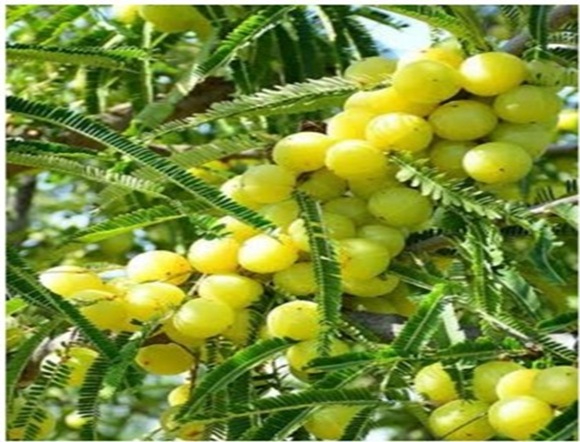

Habitat:
(Amla) is native to India and widely found throughout Southeast Asia. ]. Amla thrives in dry to moderately humid climates and prefers well-drained, sandy or loamy soils with a slightly acidic to neutral ph. The tree is commonly found in open forests, wastelands, and along roadsides in India, and it tolerates high temperatures and annual monsoon rainfall.
Flowering:
(Amla) flowers during the spring season. The flowers are small, greenish-yellow, and appear in axillary clusters. They have a sweet fragrance and are typically unisex, meaning separate male and female flowers are found on the same tree. The flowering process leads to the development of small, green fruits, which gradually ripen into the well-known Amla berries.
FRUITING:
(Amla) begins fruiting after the flowering season in summer. These fruits are about 2–3 cm in diameter and have a sour, astringent taste. The fruit matures by late fall to early winter, and it contains a single, large seed. Amla fruits are rich in vitamin C and are used extensively in traditional medicine, as well as in culinary applications.
Climatic Conditions:
Thrives in tropical and subtropical climates with temperatures ranging from 25°C to 35°C. It prefers hot, dry conditions and can tolerate high temperatures but is sensitive to frost
Seed Propagation:
The seeds should be planted about 2–3 cm deep and kept in warm, humid conditions for germination, which typically takes 3–4 weeks.
Part used:
Fruits – Rich in vitamin C, used in food, Ayurvedic medicine, and cosmetics.

Leave A Comment